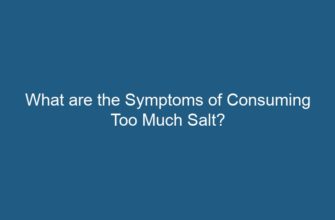Herpes zoster ophthalmicus (HZO), also known as ophthalmic shingles, is a viral infection caused by the varicella-zoster virus (VZV), the same virus responsible for chickenpox. HZO specifically affects the ophthalmic division of the trigeminal nerve, which supplies sensation to the forehead, eyelids, and the front part of the scalp. This condition can lead to a variety of symptoms, ranging from mild discomfort to severe pain and vision loss. Understanding the symptoms of HZO is crucial for early diagnosis and prompt treatment. In this article, we will delve into the details of the symptoms associated with HZO, enabling you to identify and address this condition effectively.
- 1. Prodromal Symptoms
- 2. Ocular Symptoms
- 3. Neurological Symptoms
- 4. Systemic Symptoms
- 5. Complications and Long-term Effects
- FAQs (Frequently Asked Questions)
- FAQ 1: Can herpes zoster ophthalmicus affect both eyes?
- FAQ 2: How long does the rash associated with HZO last?
- FAQ 3: Is herpes zoster ophthalmicus contagious?
- FAQ 4: How is herpes zoster ophthalmicus diagnosed?
- FAQ 5: What is the treatment for herpes zoster ophthalmicus?
- FAQ 6: Can herpes zoster ophthalmicus be prevented?
- Conclusion
1. Prodromal Symptoms
Before the characteristic rash appears, individuals with HZO may experience prodromal symptoms. These early warning signs can occur 1-5 days before the rash develops and are often indicative of an impending outbreak. Common prodromal symptoms include:
- Headache: Many HZO patients report experiencing a dull or throbbing headache, often localized around the affected eye.
- Fever: Mild to moderate fever is another common prodromal symptom associated with HZO.
- Malaise: A general feeling of discomfort, fatigue, or unease may precede the onset of the rash.
2. Ocular Symptoms
Once the rash appears, it typically affects one side of the face, focusing on the eye and the surrounding areas. The ocular symptoms of HZO can vary in severity and duration, and may include:
- Rash: The most characteristic symptom of HZO is the development of a painful rash, consisting of small, fluid-filled blisters. These blisters typically appear in a band-like pattern, known as a dermatome, around the eye, forehead, and scalp.
- Eye Redness: The affected eye may become red and inflamed, often accompanied by increased tearing.
- Eye Pain: HZO can cause moderate to severe pain in and around the eye, which may worsen with eye movements or exposure to bright light.
- Sensitivity to Light: Many HZO patients experience photophobia, a heightened sensitivity to light that can cause discomfort and even pain.
- Decreased Vision: In some cases, HZO can lead to vision loss or blurred vision. This occurs when the virus affects the cornea or other parts of the eye involved in visual function.
- Foreign Body Sensation: Some individuals with HZO may feel as if there is something foreign or gritty in their eye.
3. Neurological Symptoms
Given that HZO affects the trigeminal nerve, it can manifest with a variety of neurological symptoms. These symptoms may include:
- Facial Numbness: HZO can cause numbness or tingling in the face, particularly in the areas supplied by the ophthalmic division of the trigeminal nerve.
- Facial Weakness: In rare cases, HZO can lead to facial weakness or paralysis on the affected side.
- Corneal Involvement: When HZO affects the cornea, it can lead to corneal scarring, ulceration, or even perforation, which may result in further vision problems.
4. Systemic Symptoms
While HZO primarily affects the eye and the surrounding areas, it can also cause systemic symptoms, which may include:
- Fever: Some individuals with HZO may experience a high fever, especially during the initial stages of the infection.
- Headache: In addition to the prodromal headache, HZO can cause persistent or severe headaches during the active phase of the infection.
- Malaise: Ongoing fatigue, weakness, or a general feeling of illness can accompany HZO.
5. Complications and Long-term Effects
Without timely treatment, HZO can lead to various complications and long-term effects. These can include:
- Postherpetic Neuralgia (PHN): PHN is a common complication of HZO, characterized by persistent, severe pain in the affected area that can last for months or even years after the rash has healed.
- Visual Impairment: If the cornea or other structures involved in vision are significantly affected, HZO can result in permanent visual impairment or even blindness.
- Secondary Infections: The blisters associated with HZO can create an entry point for bacteria, leading to secondary infections such as cellulitis or conjunctivitis.
FAQs (Frequently Asked Questions)
FAQ 1: Can herpes zoster ophthalmicus affect both eyes?
No, herpes zoster ophthalmicus typically affects only one eye. However, in rare cases, it can spread to the other eye or other areas of the face.
FAQ 2: How long does the rash associated with HZO last?
The rash caused by herpes zoster ophthalmicus usually lasts for 2-4 weeks. However, it is important to note that the pain and other symptoms may persist even after the rash has resolved.
FAQ 3: Is herpes zoster ophthalmicus contagious?
Yes, HZO is contagious. The varicella-zoster virus can be transmitted to individuals who have not had chickenpox or the varicella vaccine, leading to the development of chickenpox rather than HZO.
FAQ 4: How is herpes zoster ophthalmicus diagnosed?
Diagnosis of HZO is typically based on a physical examination, evaluation of symptoms, and medical history. In some cases, laboratory tests may be performed to confirm the presence of the varicella-zoster virus.
FAQ 5: What is the treatment for herpes zoster ophthalmicus?
Treatment for HZO usually involves antiviral medications, such as acyclovir, valacyclovir, or famciclovir, to help control the viral infection. Additionally, supportive measures like pain relievers, lubricating eye drops, and cool compresses may be recommended.
FAQ 6: Can herpes zoster ophthalmicus be prevented?
While it may not be possible to prevent HZO entirely, getting vaccinated against varicella-zoster virus can reduce the risk of developing shingles and subsequent complications, including HZO.
Conclusion
Herpes zoster ophthalmicus is a viral infection that primarily affects the eye and surrounding areas. Recognizing the symptoms of HZO, such as the characteristic rash, eye pain, and sensitivity to light, is crucial for early diagnosis and treatment. Seeking prompt medical attention can help mitigate the risk of complications and long-term effects associated with this condition. By understanding the symptoms and taking appropriate preventive measures, individuals can proactively protect their eye health and overall well-being.










